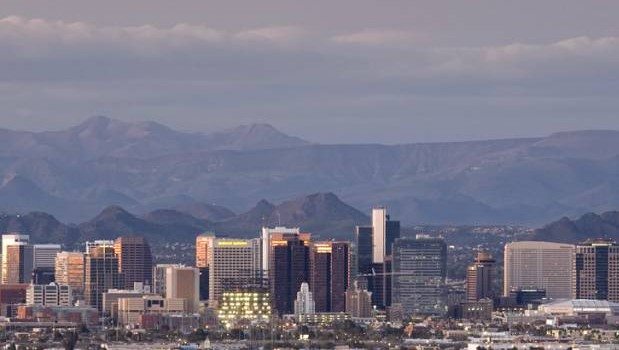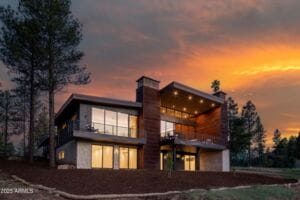Arizona may be the sixth-largest state in terms of size, but it has few big landowners and will face development challenges in the future because just 17 percent of its land is private. Most of the rest of the land is owned or held by the federal government, American Indian reservations and state government.
But here’s the flip side: For potential land buyers and developers, the combination of rapid population growth (more Baby Boomers fleeing colder climates) and scarce available private land can mean a bigger price appreciation.
Income and job growth will follow the rise of the number of Arizona residents. According to George Hammond, economic and business research center director at the University of Arizona’s Eller College of Management, the latest 30-year outlook for Arizona, “suggests that the state will continue to outpace the nation in terms of job, population, and real income growth.”
Hammond wrote on the management school’s website that Arizona grew “much faster than the nation during the 30 years before the Great Recession. That means the state will have millions more jobs and residents in 2045 that it does today.”
Arizona’s growth presents opportunities for land buyers and developers, especially if they act sooner rather than later.
“I believe that as the population of Phoenix grows, it will be tough for developers to find suitable pieces of land to build on,” said Kuldip Verma, CEO and founder of Vermaland. “Since there is more private land available in the West, I predict the growth will move West.”
The Arizona State Land Department controls the land sale process and sells a small amount, relatively speaking, of land each year.
The dilemma of future private land development typically flies under the radar despite the fact that Phoenix is expected, as Arizona Commercial Real Estate Magazine reported last August, to add one million people every ten years.
The growth means Phoenix will eventually become landlocked, forcing land development around government owned land parcels. For example, the Valley for the most part is up against land owned by the state, as AZRE reported, and the West Valley can accommodate growth because it is not landlocked.
Because government-owned land parcels pin in most of the Valley, developers face a challenge in finding land for projects. Without an adequate supply of serviced and developable land, homeowners can’t build. A lack of new construction, in turn, can cause a price rise for homes and rents.
“When you drive around the Phoenix metro it looks as though there is still plenty of room for urban growth,” said Michael Orr, Director, Center for Real Estate Theory and Practice (and also known as the “Phoenix Real Estate Guru.”) “However, this is somewhat of an illusion because so much of the surrounding land is unavailable for development. Many built-up areas now reach federal or state land boundaries or reservations. The main opportunities for significant growth lie to the west where there is still private land available and far out to the southeast towards Tucson on land, which has been previously used for agriculture.
Orr added, “There are still pockets of infill land elsewhere but the price of these parcels has reached levels that make it difficult for builders to make their target profits constructing traditional single-family homes. Instead, we are seeing an increase in proposals for high density homes packing far more dwellings per acre.”




